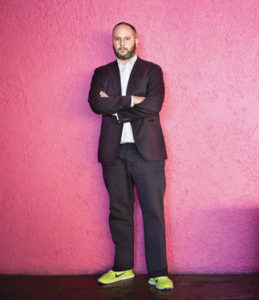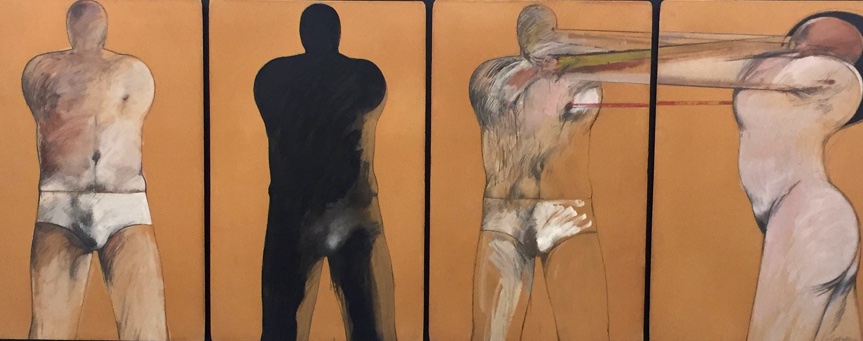
Luis Caballeros, “Sin titulo (políptico)”, 1968, on view in Referentes, ArtBO, Bogota, Courtesy of Galeria La Cometa, Photograph by Katy Hamer, 2016
In its third year, REFERENTES, one of the seven sections of ArtBO was curated by Pablo León De La Barra and Ericka Flórez. Easily the highlight of the fair, the section functioned as an exhibition rather than being divided by gallery participants or solo artist booths regularly found within the landscape of an art fair. De La Barra and Flórez worked with a wide range of artworks from various participating galleries ranging from a 1959 Botero sketch to a 1974 work by Antonio Caro which was also remade by the artist at the fair, a 2016 iteration. Divided by free-standing walls further separating the content from the main section, at the core of the exhibition were three positions; Transvestite Structures, Smoke Signals, and Soft Geometry. An underlying hypothetical narrative also ran through the exhibition revealing the subtleties of sexuality and queer culture present in Colombian and Latin American art. Using both didactic and abstract methodologies, those present were taken on a journey delving into the historical context of a country that has seen many tumultuous years but is in a state of transformation; both economic and social. Katy Diamond Hamer spoke with La Barra and Flórez on their curated process, which is by far one of the best, most culturally revealing exhibitions not only at ArtBO but within a fair context.
Katy Diamond Hamer: In the seventh edition of ArtBO and my fourth, the show you’ve both curated is by far the best that I’ve seen and congratulations for that. It’s been exciting to watch not only the fair, but the quality of work evolve each consecutive year. Walking through the exhibition, I think, it’s the first time I’ve seen queerness and the presence of the black body addressed here in Colombia. It’s refreshing, informative and a bit of an exposé, yet in a sexy, classy way. Can you speak on this?
Pablo León De La Barra: Maria Paz (director of ArtBO) made a strong decision to invest in and upgrade this section of the fair. The walls are higher the lights are better. Almost all of our requirements were met.
Ericka Flórez: I think it’s also the first time one of the sections has its own catalogue.
PDLB: Inside the catalogue is a text that speaks directly on the concept of the hypothetical fiction symposium. We kind of instrumentalized [Fernando] Botero and [Luis] Caballero in order to narrate a queer and transgender history and to demonstrate that the history of the body and the presence of sexuality has always been present. This opens the door for people maybe less acquainted to understand this history through some of the most seminal figures of Colombian art. Then we wanted to expose them to the works of Miguel Ángel Rojas (La sequin rosada, 1975/2015) whose photographs document the ‘pink corner’ a very public cruising and prostitution corner in Bogotá and Paz Errázuriz, with a series of photographs of a transvestite community in Chile during the dictatorship in the 1970s. We also reintroduce the work of Miguel Ángel Cárdenas from the 1960s who was exiled to Amsterdam because he was gay. He made an amazing body of abstract-pop, sexual works [some of which are on view in the exhibition].
KDH: Another piece that feels particularly relevant and important to not only a recent past, but today is a short video by Ivens Machado, titled “Versus” from 1974. In the black and white film, the camera pans between two men, one white and one black before after a 4 minute loop they approach each other and nearly kiss. The bodies never actually touch but there is a proposed intimacy that is unexpected while also enticing. Perhaps one of the most directly, although left to the imagination of the viewer, sexualized pieces in the show, the work silently calls attention to homosexuality and the black body.
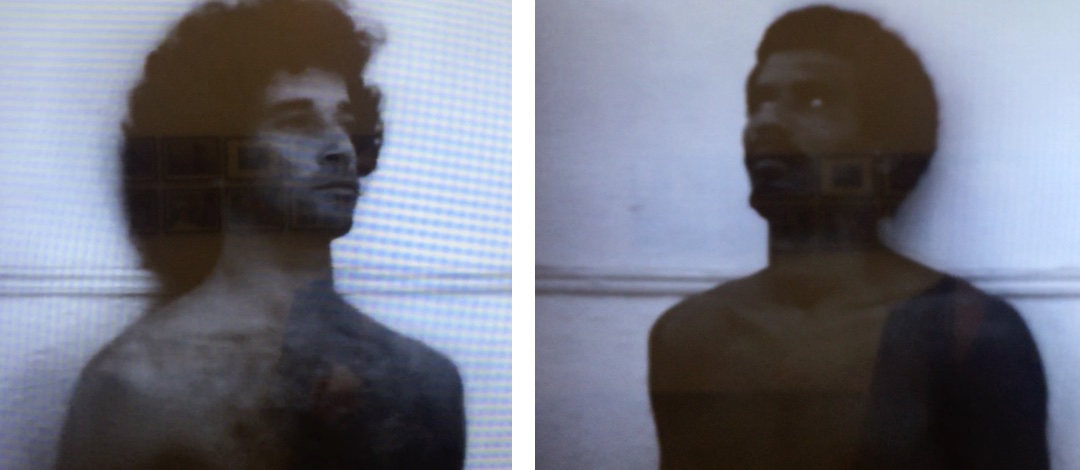
Ivens Machado, “Versus”, 1974, on view at Referentes, ArtBO, Bogota, Digital composite from video stills made by Katy Hamer, 2016
EF: We wanted to show “Versus” because there has always been this questioning about how to deal with the Other or how the Other sees us. I think that the piece is a good metaphor for larger relationships.
PDLB: Even for Brazil, at the time, it was a very challenging piece.
EF: For Referentes, we focused on three areas including Transvestite Structures which deals with the body, and this video is in that category.
PDLB: The second is more mystical and could be referenced by the works of Norman Mejía from Barranquilla [one of Colombia’s more northern cities] whose paintings including “Sin Titolo” (1979) a geometric abstraction. He was an important figure but also to the side and we are trying to bring to the forefront certain figures, who although some people in Colombia knew that they were there, maybe they had been forgotten or….
EF: …they disappeared too soon, before being fully recognized.
KDH: Something that I was also wondering as I walked through the exhibitions is, since we are at an art fair, if these works are for sale or have they been borrowed from private collections?
EF: They are all available to be acquired.
PDLB: We worked on this project for six months and seeing it come together and hung on the walls is very satisfying. Ericka loves Ana Mercedes Hoyos (a selection of beautifully painted monotone oil paintings) and I love Norman Mejía. We were able to create a series of new dialogues between artists such as María Angelica Medina who would weave her own garments and then put them behind glass and artist Martha Araújo who used geometric style clothing [as a catalyst] to perform an action.
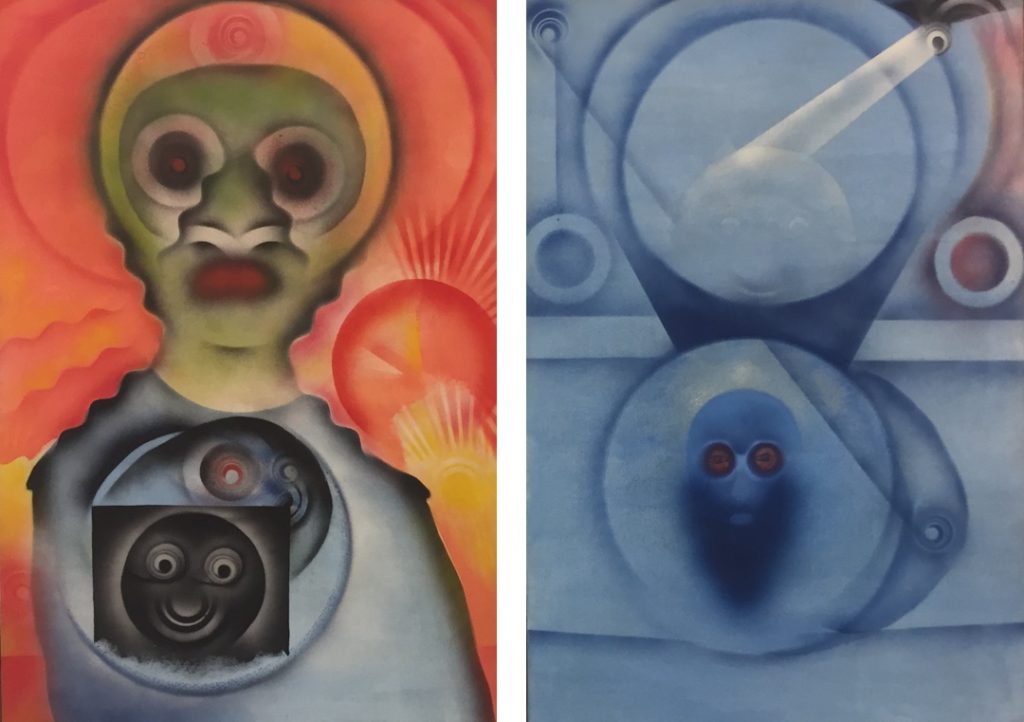
Norman Mejia, (right and left same title and date) “Sin titolo”, 1976, on view as part of Referentes, ArtBO, Bogota, Courtesy of Maria Cristina Agudelo and Ciro Alfonso Alvarez Navarro, Photograph/s by Katy Hamer, 2016
KDH: It’s interesting that you mentioned the mystical because when thinking about a caption for a post on Instagram, I found myself delving into the concept of cultural mythology.
EF: We wanted to link mysticism with other important issues within Latin American art. It’s always treated like outside issues. I don’t know yet how the work will be perceived by a new Colombian audience. Rather then being perceived as taboo, it’s worse here because nobody cares. When there is censorship, it means that the government cares about art. To be censored, the government would have to think that art is powerful and that art can create an effect, but here, the government doesn’t care. Maybe [things were censored] in the 1940s with the exposure of the naked body or representations of sex but not now. We wanted to take the opportunity to discuss the presence of the body, the use of conceptualism to raise political questions and immateriality and the way that immateriality was perceived here.
PDLB: The position from abstract geometry by Jorge Riveros, almost without meaning, to Carlos Rojas and Lotty Rosenfeld who made crosses on the pavement to comment on the dictatorship, I think that we were focusing on moving away from or at least expanding upon the notion that historical art or art from this period of Latin America was either geometric abstraction or political art and kind of expanding it or making it more complex by creating other relationships. That was also part of the reason we chose to have a divided space in order to make these dialogues [through installation].
KDH: Is there anything else that you’d like to add?
PDLB: I think what’s interesting is that we were able to do type of show within the frame of an art fair and had almost a carte blanche. On one hand my relationship with Colombia started in 2001 when I was first invited by Mariel Rodriguez a curator to come to Bogotá, which I didn’t know then. So coming throughout the years I’ve been present for the changes, and have been able to investigate and research the artistic histories. That being said, the invitation from Maria Paz was a way to bring all of these things together specifically in Colombia where a lot of these histories were not known. So for us it’s important to make these issues visible but also to put them in context and dialogue with each other and other histories.

Martha Araujo, Garment from the performance, “Hábito habitante”, 1985, On view in Referentes, ArtBO, Bogota, Courtesy of Galeria Jaqueline Martins, Photograph by Katy Hamer, 2016
ArtBO, Bogota, in its twelfth edition was open to the public from the 27th through the 30th of October, 2016. On REFERENTES, Director Maria Paz stated that the section is meant to be a space of discovery and for the public but also to strengthen the market of historical work. Then adding, “To truly be international you have to be local. You have to be connected to a local scene and only in that way can you be differential and expand.”
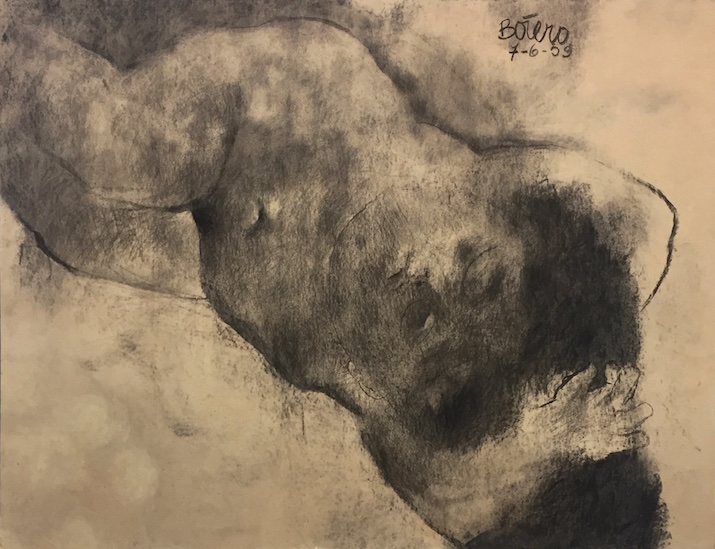
Fernando Botero, Desnudo femenino, 1959, On view in Referentes, ArtBO, Bogota, Courtesy of Galeria La Cometa, Photograph by Katy Hamer, 2016
Katy Diamond Hamer is the Founding Editor in Chief of Eyes Towards the Dove. She has been writing on contemporary art and culture since 2007. For more, follow her on instagram @katyhamer

